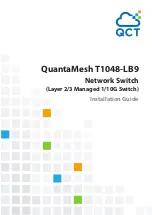
Owner’s Manual
Before using this unit, carefully read “USING THE UNIT SAFELY” and “IMPORTANT NOTES” (leaflet “USING THE UNIT SAFELY” and Owner’s Manual (p.
21)). After reading, keep the document(s) including those sections where it will be available for immediate reference.
Copyright © 2015 ROLAND CORPORATION
Contents
Rear Panel (Connecting Your Equipment) 2
Top Panel 4
Attaching the Rubber Feet 5
Installing the ES-8 in a Pedalboard 5
Turning the Power On and Off 5
Switching the Play Screen 5
Saving/Recalling a Combination of Effect Units
Block Diagram 7
Tips for Creating Patches (Sounds) 7
Changing the Effect Loop Settings 8
Changing the Effect Loop Connection Order 8
Making a Parallel Connection 8
Specifying Carry Over 8
Editing the Settings of a Patch (Memory Edit Mode) 9
Quick Edit 9
Basic Operation 9
Parameter List 9
Making Global Settings (System Setting)
Patch/Data Operations (Utility)
Adjusting the Level of Each Patch 14
Switching Between Two Guitars 14
Switching Between Two Amps 15
Switching the Amp’s Channels 15
Connecting with the Four-Cable Method / Also Switching the
Changing the BOSS PH-3’s Rate for Each Patch 16
Using an Expression Pedal to Control the BOSS PH-3’s Rate 16
Using the [BANK
] Switch to Turn Delay On/Off 17
Using Number Switch [7] to Change the Delay Time 17
Using Tap Tempo to Set the Delay Time of Each Patch 18
Applying Chorus Only While the Currently Selected Number
Switch Is Held Down 18
Using CC (Control Change) to Control a MIDI-Equipped Effect
Unit When the Patch Changes 19
Connecting a Wah or Fuzz (Input Buffer Off) 19
Troubleshooting 20
Error Messages 20
Main Specifications 21
Main features
The ES-8 is a switching system that lets you connect effect pedals
and other effect units, and then store and recall up to 800 different
combinations of them.
5
It provides dedicated jacks for connecting stereo-in/out effect units
and volume pedals.
5
It also provides a wide variety of external control functions for
controlling your amp and effects in real time.
Summary of Contents for ES-8
Page 22: ......


































